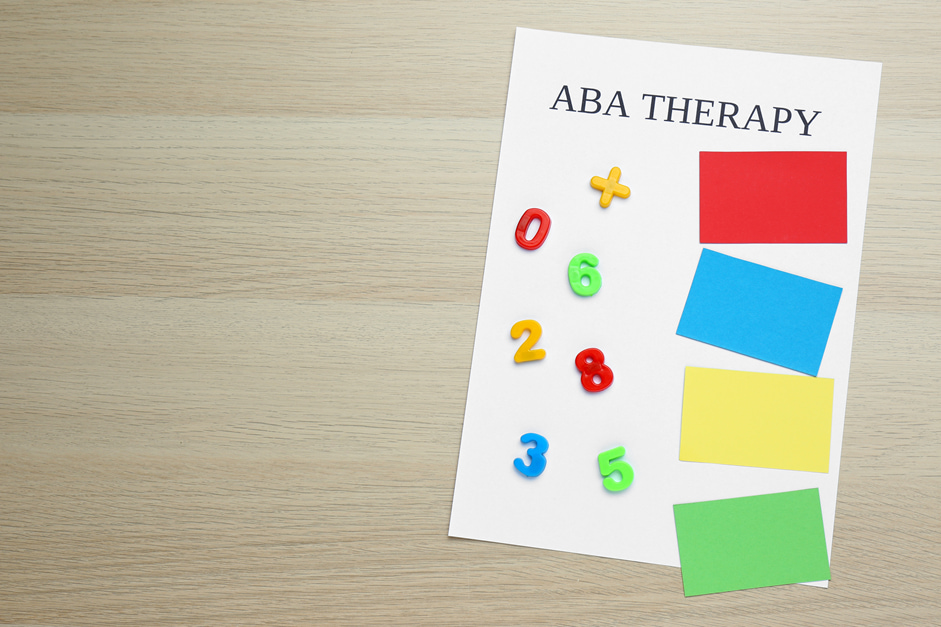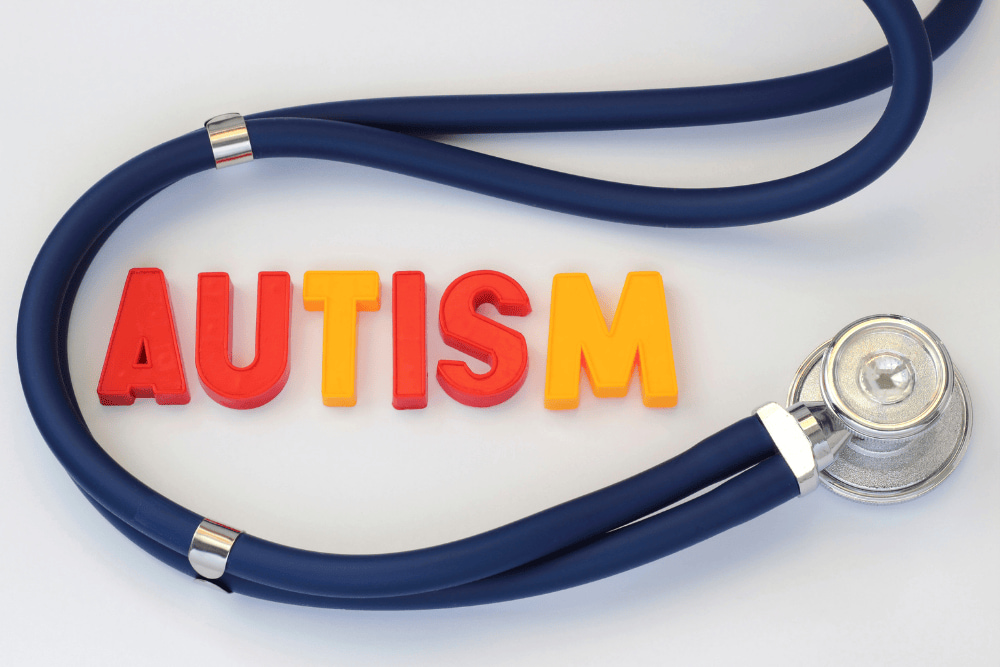Response Cost In ABA Therapy: A Complete Guide

In the realm of Applied Behavior Analysis (ABA) therapy, response cost is a widely used and effective strategy for behavior modification. It is often implemented as part of a comprehensive behavior management approach in ABA therapy.
In this article, Above and Beyond Therapy provides an overview of response cost, including its definition, purpose, and its application within the context of ABA therapy.
What is Applied Behavior Analysis (ABA) Therapy?
Applied Behavior Analysis (ABA) therapy is a scientifically based approach that focuses on understanding and modifying human behavior. It utilizes principles of learning and behavioral psychology to bring about positive behavior changes in individuals, with a focus on increasing desirable behaviors and rewarding desired behavior. Effective behavior modification is a primary goal of ABA therapy, which is widely recognized and used to address a range of behavioral issues, including those associated with autism spectrum disorder (ASD).
ABA therapy involves systematically analyzing and assessing behavior patterns, identifying the underlying causes, and developing targeted interventions. These interventions are designed to teach and reinforce adaptive behaviors while reducing challenging behaviors. ABA therapists employ various techniques, such as positive reinforcement, prompting, and shaping, to achieve desired behavioral outcomes.
What Is Response Cost?
Response cost is a behavioral term from applied behavior analysis (ABA) that refers to a form of negative punishment. It involves removing a specific amount of a reinforcer (like tokens, privileges, or points) following a behavior to reduce the likelihood of that behavior occurring again.
Definition and Purpose of Response Cost in ABA Therapy
The definition of response cost is a behavioral intervention technique used in ABA therapy to decrease or eliminate undesirable behaviors. It involves the removal or reduction of a preferred item or privilege following the occurrence of a targeted behavior. The goal of response cost is to decrease the frequency of unwanted behaviors by associating them with a consequence that the individual finds unfavorable.
The purpose of response cost in ABA therapy is to teach individuals the concept of cause and effect and help them understand the consequences of their actions. By utilizing response cost, therapists aim to increase the motivation for positive behavior while simultaneously reducing the occurrence of negative behaviors. It is a valuable tool in teaching individuals to make better choices and exhibit appropriate behaviors.
Response Cost Examples
An example of using response cost in ABA would be in the case of a child talking out of turn in the classroom. The target behavior is to reduce the frequency of this occurrence. Using the token economy system, the child would earn tokens for positive behaviors, which could be exchanged for a reward at the end of the day. The child would start the day with ten tokens. Each time he remembered to raise his hand before speaking, or remained in his seat for fifteen minutes consecutively, he would earn another token. However, if he spoke out of turn, he would lose one token. At the end of the day, the child would trade in his tokens for a reward.
This is an example of using response cost to reduce the frequency of a negative behavior.

Implementing Response Cost in ABA Therapy
Response cost is a valuable technique used in Applied Behavior Analysis (ABA) therapy to modify behavior. Implementing response cost involves several key steps, including identifying target behaviors, establishing a reinforcement system, and setting up response cost procedures.
Ongoing assessment is essential to monitor the individual's behavior and make necessary adjustments to the intervention. This ensures that inappropriate behavior is effectively addressed and that the approach remains ethical and effective over time.
Identifying Target Behaviors
The first step in implementing response cost is to identify the target behaviors that need to be modified. These behaviors should be clearly defined and measurable. Behavior analysts work closely with individuals and their caregivers to identify specific behaviors that are problematic or need improvement. By defining the target behaviors, the response cost intervention can be tailored to address those specific behaviors effectively.
Establishing a Reinforcement System
A reinforcement system is an essential component of response cost in ABA therapy. Before implementing response cost procedures, it's crucial to establish a reinforcement system that will be used in conjunction with the response cost intervention. The reinforcement system involves identifying and selecting appropriate reinforcers that will be used to motivate and reward desired behaviors. Reinforcers can vary depending on the individual and their preferences, and they can include items, activities, or social praise.
Setting Up Response Cost Procedures
Once the target behaviors have been identified and the reinforcement system is in place, response cost procedures can be established. Response cost typically involves the removal or reduction of a previously earned reinforcer when the target behavior occurs. This serves as a consequence for the behavior and helps to decrease the likelihood of its recurrence.
Response cost procedures should be designed with careful consideration to ensure they are fair, consistent, and appropriate for the individual. It is important to establish clear guidelines and rules regarding the response cost intervention, including the specific behaviors that will result in the loss of a reinforcer and the criteria for earning and losing reinforcers.
To effectively implement response cost, behavior analysts and therapists closely monitor the individual's behavior and provide immediate feedback. Consistency and accuracy in applying response cost procedures are crucial to ensure their effectiveness.
By implementing response cost in ABA therapy, individuals can learn to modify their behaviors and make positive changes. The combination of identifying target behaviors, establishing a reinforcement system, and setting up response cost procedures creates a structured and effective framework for behavior modification. Behavior analysts and therapists play a vital role in guiding and supporting individuals throughout the response cost intervention, ensuring the best possible outcomes.
Benefits and Limitations of Response Cost
Response cost is a valuable strategy used in Applied Behavior Analysis (ABA) therapy to modify behavior. It offers various benefits, but it is also important to consider its limitations. Understanding both the advantages and considerations surrounding response cost is essential for effective implementation in ABA therapy.
Benefits of Response Cost in ABA Therapy
Response cost holds several benefits in the context of ABA therapy. It can be a powerful tool for behavior modification and skill development. Here are some key advantages of utilizing response cost:
Promotes Accountability: The implementation of response cost in ABA therapy promotes accountability by holding individuals responsible for their behaviors. It establishes clear consequences for undesirable actions, encouraging individuals to make more positive choices.
Enhances Motivation: By implementing response cost, therapists can enhance motivation and increase the effectiveness of reinforcement systems. The potential loss of reinforcers motivates individuals to engage in desired behaviors, thereby improving their overall performance.
Encourages Generalization of Skills: Response cost interventions also aid in the generalization of skills. When individuals experience the consequences of their actions consistently across various settings, they are more likely to generalize the desired behaviors beyond the therapy environment.
Provides Immediate Feedback: Immediate feedback is another advantage of response cost. The immediate loss of reinforcers associated with undesirable behaviors provides individuals with clear feedback about their actions. This timely feedback helps in shaping behavior and facilitating learning.
Increases Compliance: Furthermore, response cost can help increase compliance with instructions and expectations. The potential loss of valued items or privileges encourages individuals to comply with rules and follow instructions to avoid the consequences of non-compliance.
Considerations and Limitations of Response Cost
While response cost is a useful strategy, there are considerations and limitations that need to be taken into account during its implementation. These factors ensure that response cost is used ethically and effectively. Here are some important considerations and limitations:
Individual Sensitivity: Individual sensitivity is a critical consideration when implementing response cost. It is important to assess the individual's emotional well-being and potential sensitivity to the consequences associated with response cost. The appropriateness of response cost should be evaluated on a case-by-case basis.

Reinforcement Balance: Maintaining a balance between response cost and reinforcement is crucial. Overemphasis on response cost without adequate reinforcement may lead to demotivation and potential negative emotional effects. Striking a balance between the two ensures a comprehensive and effective approach to behavior modification.
Ethical Considerations: Ethical considerations should always guide the implementation of response cost. It is crucial to ensure that the use of response cost aligns with ethical guidelines and prioritizes the safety and well-being of individuals undergoing ABA therapy.
Potential Negative Emotional Effects: While response cost can be an effective strategy, it is important to be mindful of potential negative emotional effects. Some individuals may experience frustration, anxiety, or other negative emotions in response to the loss of reinforcers. Implementing response cost with sensitivity and monitoring individual reactions is essential.
Potential for Overuse: Lastly, it is necessary to avoid overusing response cost. Overuse can lead to desensitization and reduced effectiveness. Response cost should be used judiciously, in combination with other ABA strategies, to create a comprehensive and individualized approach to behavior modification.
By considering the benefits and limitations of response cost in ABA therapy, therapists and behavior analysts can effectively utilize this strategy while maintaining ethical standards and promoting positive outcomes for individuals undergoing behavior modification.
Ethical Considerations in Response Cost
When implementing response cost in ABA therapy, it is essential to balance its effectiveness with ethical guidelines and prioritize the safety and well-being of individuals undergoing therapy.
Balancing Effectiveness and Ethical Guidelines
Response cost can be an effective strategy in behavior modification within ABA therapy. It helps individuals understand the consequences of their behaviors and encourages them to make more adaptive choices. However, it is crucial to ensure that response cost is implemented ethically.
Ethical considerations involve using response cost fairly and reasonably. It is important to establish clear guidelines and procedures to avoid any potential harm or negative impact on the individual's well-being. The behavior analyst or therapist should closely monitor and reassess the use of response cost to ensure its continued effectiveness and appropriateness.
Ensuring Safety and Well-being of Individuals in ABA Therapy
The safety and well-being of individuals participating in ABA therapy should always be the primary concern. When implementing response cost, it is vital to consider the individual's emotional and physical well-being.
To maintain safety, therapists should ensure that the consequences or penalties associated with response cost are not overly harsh or punitive. The use of response cost should not lead to psychological distress or harm. It is essential to strike a balance between reinforcing positive behaviors and discouraging negative ones, while still creating a supportive and nurturing environment.
Open communication and collaboration between the behavior analyst, therapist, and other professionals involved in the individual's care are crucial to ensure that response cost is implemented responsibly and in line with ethical guidelines.
By carefully considering the ethical ramifications of response cost in ABA therapy, professionals can maximize its benefits while safeguarding the well-being and dignity of the individuals receiving treatment. This approach ensures that the therapy remains effective, respectful, and aligned with the principles of ethical behavior analysis.
The Role of Professionals in Response Cost
In the implementation of response cost in ABA therapy, the involvement of trained behavior analysts and therapists is crucial. These professionals play a key role in guiding and overseeing the use of response cost strategies to effectively modify behavior.

Trained Behavior Analysts and Therapists
Trained behavior analysts and therapists are highly skilled professionals who possess expertise in the principles and techniques of Applied Behavior Analysis (ABA) therapy. They have undergone extensive education and training to understand the complexities of behavior and how to bring about positive changes.
When it comes to response cost in ABA therapy, behavior analysts and therapists are responsible for:
- Assessing and analyzing behavior: Trained professionals conduct comprehensive assessments to identify target behaviors that may benefit from the implementation of response cost. They carefully analyze the antecedents and consequences of behavior to develop effective strategies.
- Designing individualized intervention plans: Based on their assessments, behavior analysts and therapists create individualized intervention plans that incorporate response cost strategies. These plans are tailored to the unique needs and goals of the individual receiving ABA therapy.
- Implementing response cost procedures: Behavior analysts and therapists are responsible for implementing response cost procedures with precision and consistency. They closely monitor the progress of the individual and make necessary adjustments to ensure the effectiveness of the intervention.
- Collecting and analyzing data: Professionals collect data on the targeted behaviors and the outcomes of response cost procedures. This data helps them assess the effectiveness of the intervention and make data-driven decisions for further modifications, if needed.
Collaborative Approach in Implementing Response Cost
A collaborative approach is essential in the successful implementation of response cost in ABA therapy. Professionals work closely with other members of the therapy team, including caregivers, teachers, and other relevant individuals. This collaborative effort ensures a comprehensive and consistent approach to behavior modification.
The collaboration involves:
- Communication and coordination: Behavior analysts and therapists collaborate with caregivers and other team members to align goals and strategies. Regular communication allows for the exchange of information, progress updates, and addressing any concerns or challenges that may arise.
- Training and support: Professionals provide training and support to caregivers and other team members to ensure the effective implementation of response cost techniques outside of therapy sessions. This empowers caregivers to reinforce response cost procedures consistently and reinforce positive behavior throughout the individual's daily routines.
- Ongoing evaluation and modification: Collaboration enables professionals to gather valuable insights from caregivers and team members regarding the individual's progress and response to response cost strategies. This feedback helps in making informed decisions and modifications to the intervention plan as necessary.
By working together, trained behavior analysts, therapists, caregivers, and other team members create a supportive environment that maximizes the benefits of response cost in ABA therapy. This collaborative approach ensures the effectiveness, consistency, and sustainability of behavior modification efforts.
Response Cost: In Conclusion
In conclusion, response cost is a valuable strategy in Applied Behavior Analysis (ABA) therapy that can be used to modify behavior effectively. By identifying target behaviors, establishing a reinforcement system, and setting up response cost procedures, individuals can learn to make positive changes and develop new skills. However, it is crucial to consider the limitations and ethical considerations surrounding response cost to ensure its appropriate use.
At Above and Beyond Therapy, our trained behavior analysts and therapists play a vital role in guiding and supporting individuals throughout the intervention process. With careful consideration and collaboration, we implement response cost in a way that promotes positive outcomes while prioritizing the safety and well-being of individuals participating in ABA therapy. Reach out to us today if you know someone who could benefit from our services.
FAQs on Response Cost in ABA
How does response cost work in ABA?
In Applied Behavior Analysis (ABA), response cost is a form of negative punishment. It involves removing a specific amount of a reinforcer (like tokens, privileges, or points) after a target behavior occurs, intending to decrease that behavior in the future.
What is an unwanted consequence of response cost in ABA?
An unwanted consequence of using response cost in ABA is that it can lead to emotional or behavioral side effects, such as crying, aggression, withdrawal, or tantrums.
What is a bonus response cost in ABA?
In Applied Behavior Analysis (ABA), a bonus response cost is a specific type of response cost strategy where an individual is given extra reinforcers in advance (a “bonus”), which can then be taken away contingent on undesired behavior.


.jpg)





.png)



